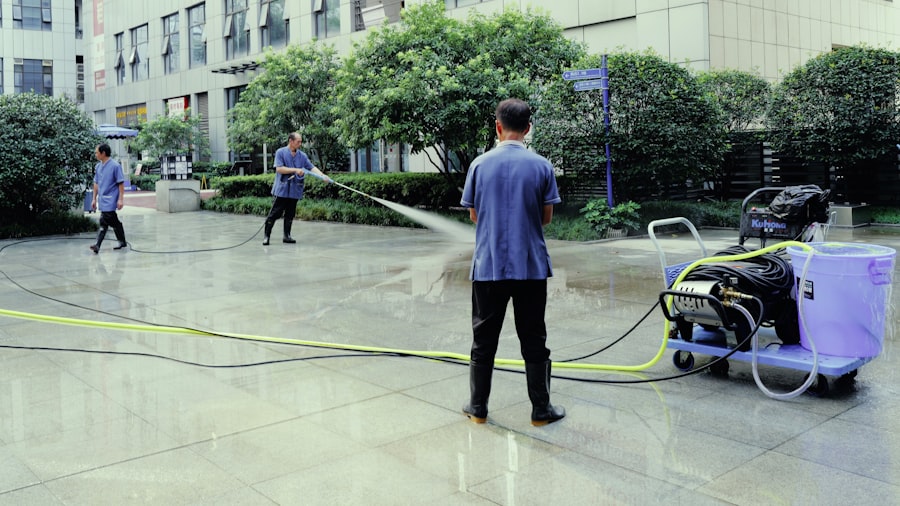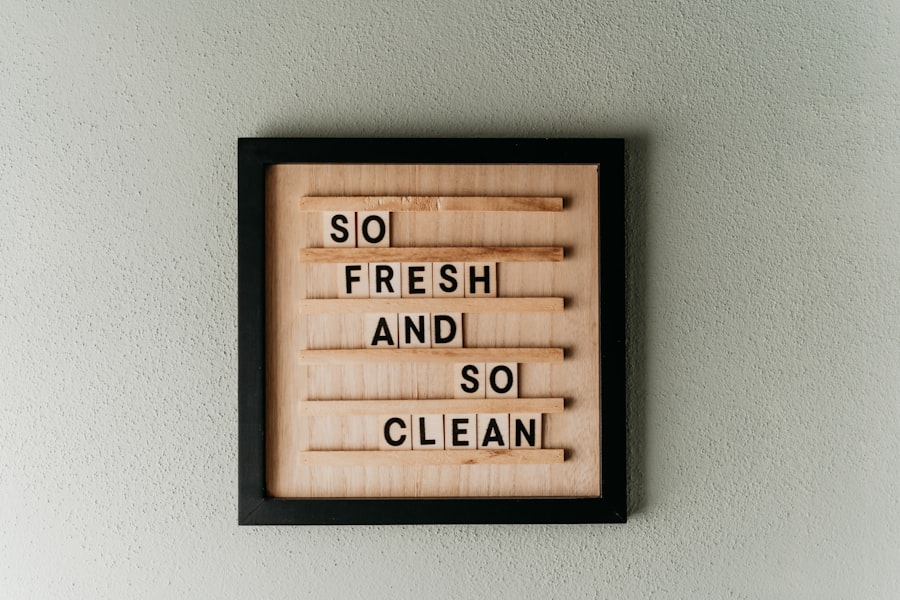Scotchgard is a well-known brand of protective treatment designed to repel stains and spills on various surfaces, including fabrics, carpets, upholstery, and even hard surfaces like tile and wood. Developed by 3M, Scotchgard works by creating a barrier that prevents liquids from penetrating the material. This barrier is formed through a unique chemical process that allows the treatment to bond with the fibers of the fabric or surface, effectively making it hydrophobic.
When a liquid is spilled on a Scotchgard-treated surface, it beads up and can be easily wiped away, minimizing the risk of permanent stains. The science behind Scotchgard lies in its fluorochemical technology, which alters the surface tension of the treated material. By reducing the ability of liquids to adhere to the surface, Scotchgard not only protects against stains but also helps to maintain the original appearance of the material for a longer period.
This makes it an invaluable tool for homeowners and businesses alike, as it can significantly reduce cleaning time and costs while prolonging the life of furniture and textiles.
Key Takeaways
- Scotchgard is a protective coating that repels liquids and prevents stains on surfaces.
- Professional Scotchgard applicators have the expertise and tools to ensure thorough and effective application.
- Consider factors such as surface type and size when choosing the right Scotchgard applicator.
- Proper application involves thorough cleaning, even coverage, and adequate drying time.
- Regular reapplication is important to maintain Scotchgard’s protective properties.
The benefits of using a professional Scotchgard applicator
While many consumers may consider applying Scotchgard themselves, enlisting the services of a professional applicator offers numerous advantages. First and foremost, professionals have the expertise and experience necessary to ensure that the product is applied correctly and evenly. This is crucial because improper application can lead to uneven protection or even damage to the material being treated.
A professional applicator understands the nuances of different fabrics and surfaces, allowing them to select the appropriate product and application method for each specific situation. Additionally, professional applicators often have access to higher-quality products and equipment than what is available to the average consumer. This means that they can provide a more effective treatment that lasts longer and offers better protection against stains and spills.
Furthermore, many professional services include a warranty or guarantee on their work, giving clients peace of mind that their investment is protected. By choosing a professional Scotchgard applicator, you can ensure that your surfaces receive the best possible care and protection.
Choosing the right Scotchgard applicator for your needs

Selecting the right Scotchgard applicator is essential for achieving optimal results. Start by researching local professionals who specialize in fabric protection services. Look for companies with a solid reputation and positive customer reviews, as this can provide insight into their level of expertise and customer satisfaction.
It’s also beneficial to ask for recommendations from friends or family who have previously used Scotchgard services. Once you have a shortlist of potential applicators, consider their experience and qualifications. Inquire about their training in fabric care and protection, as well as their familiarity with different types of materials.
A knowledgeable applicator will be able to assess your specific needs and recommend the best treatment options for your surfaces. Additionally, don’t hesitate to ask about their application process, including the products they use and any warranties they offer. This information will help you make an informed decision and ensure that you choose an applicator who aligns with your expectations.
Understanding the application process
| Metrics | Data |
|---|---|
| Number of Applications | 500 |
| Application Completion Rate | 80% |
| Time to Complete Application | 15 minutes |
| Application Approval Rate | 70% |
The application process for Scotchgard typically involves several key steps to ensure effective protection. Initially, the surface to be treated must be thoroughly cleaned to remove any dirt, dust, or existing stains. This step is crucial because any contaminants left on the surface can interfere with the bonding process of the Scotchgard treatment.
Professional applicators often use specialized cleaning solutions and equipment to ensure that the surface is pristine before applying the protective treatment. Once the surface is clean and dry, the Scotchgard product is applied using either a spray or foam method, depending on the type of material being treated. The applicator will ensure an even distribution of the product across the entire surface, paying special attention to seams and edges where spills are more likely to occur.
After application, it’s essential to allow adequate drying time for the treatment to bond effectively with the material. This process can vary in duration depending on environmental conditions and the specific product used. Following these steps ensures that your surfaces receive maximum protection against stains and spills.
The importance of regular reapplication
To maintain optimal protection against stains and spills, regular reapplication of Scotchgard is essential. Over time, factors such as wear and tear, exposure to sunlight, and routine cleaning can diminish the effectiveness of the treatment. As a result, surfaces may become more susceptible to staining and damage if reapplication is neglected.
Most experts recommend reapplying Scotchgard every six months to a year, depending on usage and environmental conditions. Regular reapplication not only helps maintain the protective barrier but also extends the life of your furniture and textiles. By investing in routine treatments, you can save money in the long run by reducing the need for costly cleaning or replacement of damaged items.
Additionally, maintaining a Scotchgard treatment can enhance the overall appearance of your surfaces, keeping them looking fresh and new for years to come.
Common misconceptions about Scotchgard

Despite its popularity, there are several misconceptions surrounding Scotchgard that can lead to misunderstandings about its effectiveness. One common myth is that Scotchgard makes surfaces completely stain-proof. While it does provide a significant level of protection against spills and stains, it is not an impenetrable barrier.
Certain substances, particularly those that are oily or acidic, may still cause staining if left untreated for an extended period. It’s important for consumers to understand that while Scotchgard greatly reduces the risk of staining, prompt cleaning of spills is still necessary. Another misconception is that once a surface has been treated with Scotchgard, it never needs reapplication.
As mentioned earlier, regular maintenance is crucial for ensuring continued protection. Over time, environmental factors and regular use can wear down the effectiveness of the treatment. By dispelling these myths, consumers can make more informed decisions about their fabric care and understand how best to utilize Scotchgard for optimal results.
Tips for maintaining surfaces treated with Scotchgard
To maximize the benefits of Scotchgard-treated surfaces, proper maintenance is key. First and foremost, it’s essential to clean up spills promptly to prevent any potential staining. Blotting rather than rubbing is recommended when dealing with spills; this technique helps absorb liquid without pushing it deeper into the fibers.
Using a clean cloth or paper towel can help lift away moisture without damaging the treated surface. In addition to immediate spill response, regular cleaning is important for maintaining treated surfaces. Depending on the type of material, vacuuming upholstery or carpets regularly can help remove dirt and debris that may accumulate over time.
For fabrics that are machine washable, following care instructions will help preserve both appearance and protective qualities. Avoid using harsh chemicals or abrasive cleaners on treated surfaces, as these can compromise the Scotchgard barrier. By following these maintenance tips, you can ensure that your surfaces remain protected and looking their best.
Finding a reliable expert Scotchgard applicator
Finding a reliable expert Scotchgard applicator requires some research but can significantly enhance your experience with fabric protection services. Start by searching online for local professionals who specialize in Scotchgard application or fabric care services. Websites like Yelp or Google Reviews can provide valuable insights into customer experiences and satisfaction levels.
Once you have identified potential applicators, reach out to them directly to ask questions about their services, experience, and pricing structures. A reputable applicator should be willing to provide references or examples of previous work upon request. Additionally, inquire about any warranties or guarantees they offer on their services; this can be an indicator of their confidence in their work quality.
In conclusion, investing in professional Scotchgard application not only protects your valuable surfaces but also enhances their longevity and appearance. By understanding what Scotchgard is, how it works, and how to choose a qualified applicator, you can make informed decisions that will benefit your home or business for years to come. Regular maintenance and reapplication will further ensure that your treated surfaces remain in pristine condition while dispelling common misconceptions will empower you as a consumer in your fabric care journey.
